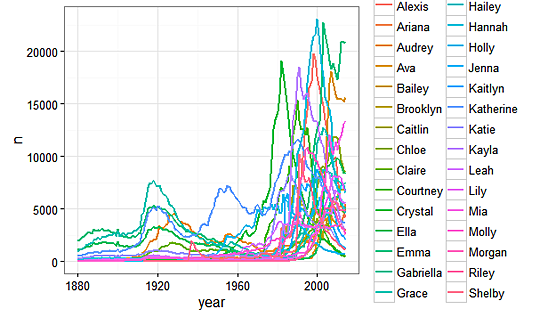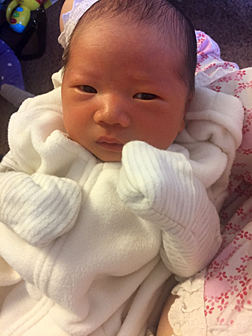Teachers notice it the most.
Popular names can be confusing when groups of students in a classroom share the same one.

Ram Mukherjee, left, analyzed the popularity of names for newborn girls, a project supervised by Dr. Tian Chen, assistant professor.
“We wanted to explore which names appear together over time, and the results are quite interesting,” Ram Mukherjee, a graduate student studying statistics and working as a teaching assistant at the University, said.
After struggling to hand back homework assignments to college classes with a lot of students named Emily, Abigail and Christina, a group of UT graduate students analyzed underlying data structures to understand reasons behind popular clusters of first names for newborn girls in the U.S. from 1880 to 2004.
The team chose to work with girls only for its baby name research because there are more options. Out of 104,110 unique names, 64,911 are female and 39,119 are male.
 “For example, the cluster of Emily, Abigail, Christina, Sarah, Nicole, Rachel and Megan grew steadily in the 1980s and peaked in the 1990s for newborns, which explains the reason why we see so many in college or the workforce now,” Mukherjee said.
“For example, the cluster of Emily, Abigail, Christina, Sarah, Nicole, Rachel and Megan grew steadily in the 1980s and peaked in the 1990s for newborns, which explains the reason why we see so many in college or the workforce now,” Mukherjee said.
Emma, Ella, Claire, Anna and Kathryn trended together in the 1930s and rose again together in the 1990s. Elizabeth and Kelly were popular in the 1920s and began to surge again in the 1970s.
Dr. Tian Chen, assistant professor in the Department of Mathematics and Statistics, supervised the project. Chen gave birth less than two weeks ago to a boy she named Daniel. Chen chose the name Chloe for her daughter two years ago.

Dr. Tian Chen just had a baby boy, Daniel. She said she chose the name because “it sounds beautiful and currently is declining as a trend, meaning it might not be overused anymore.”
Chloe, Claire, Emma, Grace, Ella, Bailey and Mia are in a cluster riding a current wave.
“Emma, Ella and Grace experienced some fame about 100 years ago, then went silent and suddenly peaked after 2000,” Mukherjee said. “However, Chloe and Bailey are the newbies. They are Generation Y, who are still small and about to enter school or have recently started school.”
Dorothy, Virginia, Betty, Margaret, Anna, Evelyn, Helen and Shirley started to rise in the 1880s and experienced a baby boom in the 1920s and 1930s. Anna and Evelyn recently experienced small resurgences.
The names Barbara, Linda, Mary and Patricia never go out of style.
“They are popular at all times for new parents, but were especially hot in the late 1940s and the 1950s,” Mukherjee said.
Mothers most commonly named their newborns Lisa, Amy, Laura or Jennifer in the 1970s.
In the 1950s, Carol, Debra and Sharon topped the charts.
However, names like Diana and Joan have had variability over the years. Diana was popular for newborns in the 1950s, decreased for a while and then surged in the 1990s.
“Princess Diana’s influence, no doubt,” Chen said.
Of the most unique names during the 124-year span, the highest frequency occurred for Latory and Massa, which was no more than 100 newborns.
The team’s research continues. The next step is to predict future trends.
“If new parents turn back to tradition, the names of the 1970s or maybe even more from the 1920s could make a comeback,” Mukherjee said. “Or more expecting parents could turn to the less common and more one-of-a-kind route. We are working on that right now.”